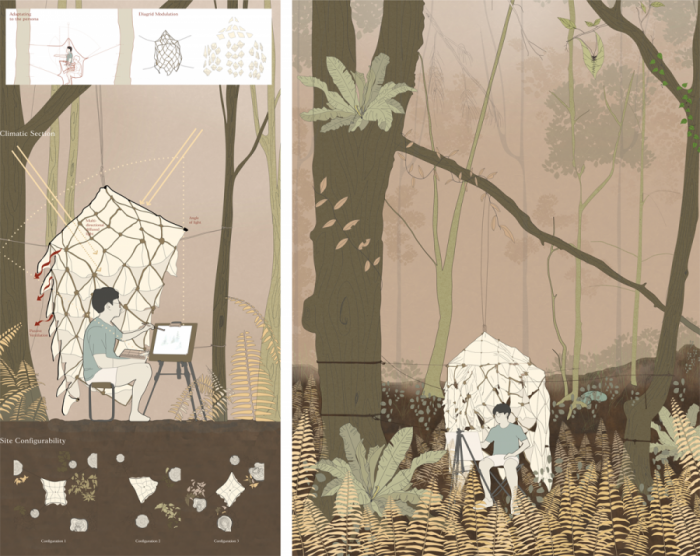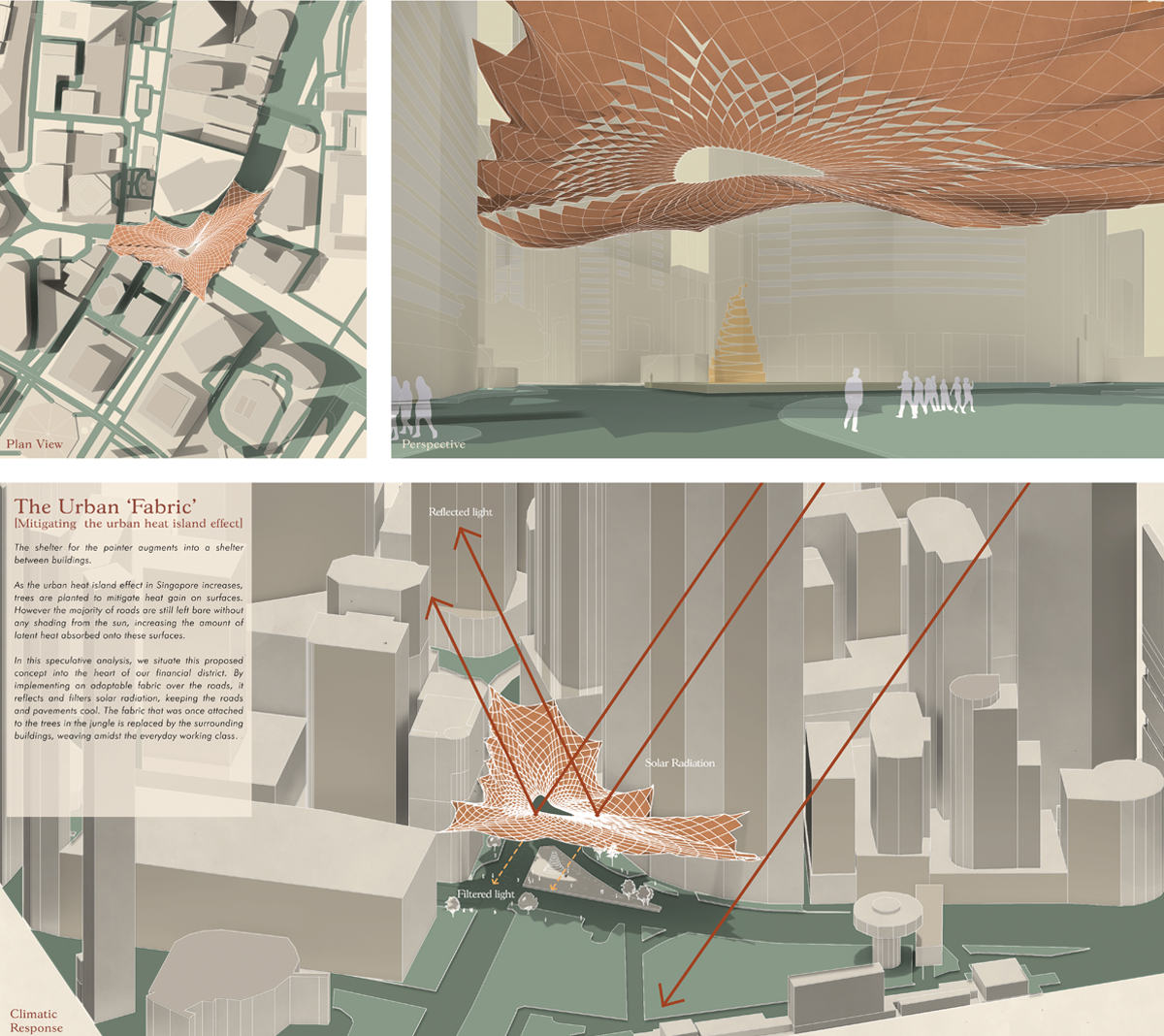
Utilising the forest as their muse, the authors design a shelter for an artist who seeks solace in painting forest rainscapes. Their proposal – unSTRUCTURED explores adaptability of form, providing a lightweight, comfortable and waterproof envelope for a painter in the rain. Beyond the physical responses, the envelope cocoons the painter, providing a hideout from the beautiful yet hostile forest ecosystem.
Authors began an iterative design process by analysing the basic form and climatic responses to create the basis of sheltering from the rain. Starting with an umbrella form, they moved on to customising the structure to the user’s needs, then into the site and environmental context. The from integrates modular tessellations with fabric to shape around the persona. Burlap is used as covering due to its durability and permeability. The construction is done with stitching of the modules together in keeping with sustainable means and mimicking the tailorbird’s technique.
The design comprises of an outer layer that shields from the elements and the inner piece functions as a backsplash, preventing direct contact with the rain. The panel also provides good airflow and unobstructed diffused lighting. The final panel is able to expand and contract, resulting in different configurations. For instance, when the panels contract, a greater aperture allows an exchange of air circulation. Whilst the expanded state closes the gaps between the 2 layers, increasing the waterproofing capabilities of the panels.

With the design of a panel, the next challenge was to tessellate the pattern across a form. The authors decided a single point origin, hung from a branch, with the panels radiating from there. This created a cascading form of grid that was effective in its shape to allow rain to roll off the surface. Also, it allowed them to perceive the possible points to pull the grid, to adapt the model in any configuration of trees.
Speculative exercise
The shelter for the painter augments into a shelter between buildings. As the Urban Heat Island effect (UHI) in Singapore increases, trees are planted to mitigate heat gain on surfaces. However, most roads are still left bare without any shading from the sun, increasing the amount of latent heat absorbed onto these surfaces.
In this speculative analysis, the authors situate this proposed concept into the heart of the financial district. By implementing an adaptable fabric over the roads, it reflects and filters solar radiation, keeping the roads and pavements cool. The fabric that was once attached to the trees in the jungle is replaced by the surrounding buildings, weaving amidst the everyday working class.
